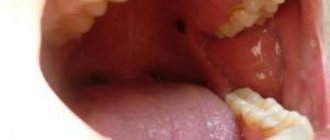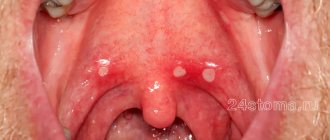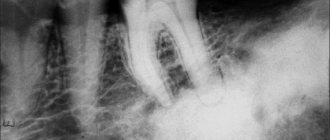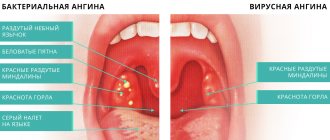The formation of a hematoma on the cheek is a fairly rare occurrence. As a rule, it is a consequence of injury. However, sometimes a bruise on the cheek may appear for no apparent reason. In this case, you need to see a doctor and get diagnosed. It is important to understand that the cheek is an area penetrated by many nerve fibers. Moreover, each of them influences facial expressions. When the nerves are damaged, asymmetry can develop. If you don't see a doctor promptly, the problem can bother you for life.
Causes
Most often, a bruise on the cheek is the result of damage to the skin caused by a blow, fall, etc.
Often a hematoma forms after extraction. In most cases, the appearance of a bruise on the cheek after tooth extraction is normal. As a rule, a hematoma is a consequence of:
- Damage to soft tissues caused by medical instruments during medical procedures.
- Development of the inflammatory process after surgery.
- Individual characteristics of the body. After tooth extraction, bruises most often appear in patients suffering from hypertension, diabetes mellitus and vascular pathologies.
- Removing an abscess formed on the gum.
- A complex operation during which dystopia or impaction of a dental unit was performed.
Often the cause of a bruise on the cheek is the removal of a wisdom tooth. This is due to the fact that this dental unit has an awkward position, and therefore soft tissues are often damaged by medical instruments.
If a bruise appears on the face for no reason, you should consult a doctor. The presence of a hematoma indicates that the walls of the blood vessels are greatly weakened, and the body is experiencing a deficiency of vital nutritional components. Treatment is prescribed by a doctor based on the results of laboratory diagnostics.
A bruise on a child’s cheek is always the result of a bruise. If the hematoma does not appear immediately after, for example, a fall, you can get by using folk remedies and pharmaceutical ointments. If the bruise becomes clearly visible in less than an hour, and the cheek is swollen, it is necessary to show the child to a pediatric surgeon. The specialist will conduct an examination and, based on the results of the initial diagnosis, determine the tactics for further management of the small patient. In isolated cases, surgical intervention is required.
Why did gumboil appear after dental treatment?
Swelling of the gums indicates the occurrence of an inflammatory process, which caused the complication. If painful sensations are observed against the background of the tumor, the main reasons for this may be:
- Periodontal inflammation. The tumor is observed on both cheeks, but pronounced swelling occurs only on the infected side.
- Neglected teeth, improper placement of fillings. Before swelling occurs, pain occurs. After 2-3 days, a flux with pus may form.
- Incorrect development of wisdom teeth. A hood forms from the mucous membrane, in which food particles accumulate and become inflamed.
- Removal of a tooth. Due to mechanical damage to the tissue, swelling can be considered normal.
- Cyst. The inflammatory process lasts for 1.5-2 years and injures the periosteum. The pathology occurs against a background of severe pain.
Attention! Swelling of the cheek after dental treatment can develop due to infection in the socket, which not only causes discomfort and swelling, but can also lead to more serious consequences.
If there is no pain during swelling, the reasons for this are as follows:
- allergic reaction to anesthesia, dental materials (swelling sometimes affects the entire face);
- removal of the nerve: part of the nerve may remain in the canals; after installation of the filling, flux appears;
- dissection of the gums, extracted tooth (in these cases, swelling is normal);
- infectious inflammation of the lymph in children, accompanied by aches and fever;
- neurological diseases accompanied by swelling, congestion in the ears, sore throat, weakness.
Important! In the case of severe pathologies of internal organs, the drainage of fluid is often disrupted; as a result, it accumulates in the nose, cheeks, neck, cheekbones and near the eyes.
Diagnostics
If the bruise on the cheek is severe, does not go away for a long time and causes concern, you should consult a surgeon. The specialist will examine the affected area and draw up a treatment plan depending on the severity of the damage. In advanced cases, the surgeon evaluates the feasibility of surgical intervention.
Classification of hematomas:
- I degree of severity. They are characterized by the presence of minor painful sensations, the intensity of which may increase with palpation of the affected area. There may be minor scratches or abrasions on the skin. As a rule, such bruises disappear after 5 days.
- II degree of severity. If a bruise and swelling appear on the cheek, it means there has been a violation of the integrity of the muscle tissue. In such cases, patients experience acute pain.
- III degree of severity. It is characterized by severe damage to the skin. Swelling forms in the affected area and bruising is noticeable.
- IV degree of severity. In this case, not only the skin is affected, but also muscle and nervous tissue. After injury, paralysis occurs.
In addition, a hematoma can be either external or internal. In the first case, it acquires a bright bluish tint. An internal hematoma is in no way different from healthy skin, but upon palpation a compaction can be detected.
Why does pain occur after an injection into the gum?
Since the needle is inserted into soft tissues, it injures them and provokes discomfort. The patient may feel pain at the injection site for 1-2 days, or even more. The duration of the recovery period depends on the characteristics of the body and the perception of stimuli at the neuropsychic level.
Overly sensitive patients should be prepared for aching pain. Most often, no action is required. Usually the pain subsides on its own. In the case when it does not go away and only gets worse over time, we can talk about the development of a complication. At the same time, other signs of disturbances may occur.
Sometimes the patient thinks that the injection site hurts, but the localization is in a different place. So, after caries treatment, you may feel aching pain that radiates to the gums. Removal of a wisdom tooth is accompanied by pain in the socket, while the patient thinks that the problem is localized at the injection site.
"Bruise OFF": instructions for use
This drug is intended for external use. According to reviews from doctors, “Bruise OFF” is a remedy that in a short time helps to get rid of not only hematomas, but also swelling. This is due to the composition of the drug.
It is represented by the following active components:
- Medical leech saliva extract. The healing liquid improves microcirculation, due to which hematomas quickly resolve and swelling disappears. It is important that leech saliva prevents blood clots, accelerates regeneration processes and helps strengthen general immunity.
- Pentoxifylline. It is an antispasmodic that improves blood circulation in the affected area. It is able to penetrate into the deep layers of the skin, which is responsible for the rapid effect.
- Ethoxydiglycol. This substance is a kind of conductor that improves the penetration of components into tissues.
To treat a bruise on the cheek, you must first clean the skin. Then you need to apply the drug to the hematoma with gentle movements. The product can be used up to 5 times a day. With regular use, the visible effect is noticeable after 3 days.
Using badyagi
Today it is one of the most widely used medicinal plants. It can be purchased at the pharmacy in powder and gel form. However, the first is considered the most effective.
According to the instructions for use, badyagi powder contains a large number of useful components, in particular silicon, which has pronounced regenerating properties.
On average, bruises go away on their own within 2-3 weeks. Badyaga helps speed up this process by half. Powder dilution options:
- Mix the raw materials with water in a 2:1 ratio. This is the easiest way. Apply the resulting mixture to your cheek and leave until the mixture dries completely. You also need to wash it off with plain water. According to the instructions for use, badyagi powder may cause minor tingling. Their presence is not a reason to immediately wash off the mass. The annotation states that this is a skin reaction, which is a variant of the norm.
- Mix the raw materials with olive or any other vegetable oil. The consistency of the gruel should resemble sour cream. Apply the resulting mass to a piece of gauze and apply to your cheek. You can secure the compress with a bandage or scarf. It is recommended to do the procedure at night. According to reviews, the hematoma resolves within 3-4 days.
- Mix the powder with a small amount of hydrogen peroxide. The consistency of the mass should resemble thick sour cream. Apply the paste onto the damaged cheek and wait until the mixture dries completely. After this, it should be washed off with warm water.
- Mix badyagu and white clay in equal proportions (you can use black clay instead). Dilute the raw material with hot water. The mass should be thick. Apply the resulting paste to your cheek for 20 minutes, then rinse with warm water.
According to the instructions, badyagu cannot be used if the integrity of the skin is damaged. This can trigger the production of exudate. In addition, after using the product, it is not advisable to go outside for 3 hours. Doctors strongly recommend purchasing sunscreen with a high spf factor during the treatment period.
When does swelling of the cheek go away?
How long the swelling lasts after tooth treatment depends on the degree of damage. Swelling causes injury to tissues, ligaments, and blood vessels during surgery or root removal. After such an intervention, swelling is normal. It can last from 2 hours and last for 7 days or the first day after surgery. There are no painful sensations.
Swelling after surgery on a wisdom tooth can last 4 days longer and persists for 11 days. If the surgery was serious, a bruise may form on the cheek. Pronounced swelling, increasing every day, pain is a reason to urgently consult a dentist.
Ointment "Troxevasin"
Contrary to popular belief, this remedy helps to very quickly get rid of a hematoma of any origin and location.
Positive effect on damaged tissues:
- The integrity of blood vessels is restored.
- Their permeability is normalized.
- Clots of liquid connective tissue are removed from the subcutaneous tissue.
- The inflammatory process is stopped.
- Toxic compounds that are formed after the destruction of small blood vessels are removed from the tissues.
After the first use of the drug, the microcirculation process improves, swelling disappears and the skin texture is evened out. According to the instructions, Troxevasin ointment relieves bruises in 3-4 days. It can be used immediately after injury. In some cases, this technique helps to avoid the appearance of a hematoma altogether, or its manifestations will be less pronounced.
You can also use Troxevasin if the bruise is a consequence of a deficiency of nutritional components in the body. In the presence of extensive hematomas, doctors recommend additionally taking the drug orally (in capsule form).
Using ointments for bruises
It is important that if there is a bruise or a hematoma, try to apply ice or a heating pad with cold water to the damaged area. This will prevent the development of severe swelling. Only after this is it recommended to use anti-bruise products.
On the first day after injury, it is better to use ointments containing heparin. The drugs increase the speed of blood flow, thin the blood and prevent the expansion of the hematoma.
If there is pain, you can apply an ointment containing non-steroidal anti-inflammatory drugs to the damaged area. The most well-known drugs are diclofenac and ibuprofen. They can be applied to the damaged area a couple of hours after injury.
In the future, to speed up the resorption of the bruise, you need to use ointments based on badyagi or comfrey. You can also use other ointments with a warming effect to increase blood circulation. They often contain snake and bee venom.
With proper and timely treatment of bruises, the occurrence of large hematomas can be prevented. But if bruises do appear, it is necessary to use special ointments to speed up their resorption and tissue restoration. When you cannot get rid of hematomas on your own, and the bruises increase in size, you should urgently consult a doctor.
Use of heparin ointment
With the use of the product, hematomas resolve faster, swelling is eliminated, and pain disappears. This is due to the combination of the following active ingredients: sodium heparin, benzyl nicotinate and benzocaine.
Many parents are interested in whether heparin ointment helps with bruises in children. It is important to know that the drug is contraindicated if the child is under 14 years of age. This condition should not be ignored, since in children the use of heparin often leads to the development of all sorts of complications.
According to the instructions, the ointment should be applied with gentle massaging movements. Immediately after application, the skin turns slightly red, and the person feels warmth in the affected area. You can use the ointment up to 5 times a day.
Folk remedies
Many people are interested in how to remove a bruise on the cheek using unconventional methods. The most effective are the following recipes:
- Take 10 g of salt and dilute it in 100 ml of water. Moisten a piece of gauze or cotton cloth in the resulting liquid and apply to the cheek for 2 hours. You can secure the compress with a scarf or bandage.
- Take 10 g of flax seeds. Grind them using a blender. Mix the raw materials with 40 ml of any vegetable oil (preferably olive). Apply the resulting product onto a piece of cotton fabric folded in several layers. Secure the compress and leave overnight.
- Take a fresh cabbage leaf. Rinse it well in running water. On one side, make many shallow cuts on the sheet. Place it on your cheek and secure it. It is recommended to apply the compress at night.
- Take 10 g of wild rosemary flowers. Grind the raw materials. Fill it with 200 ml of water. Place the container on the fire. Boil for 15 minutes. Cool the resulting broth and strain. Soak a piece of cloth in it and apply it to your cheek for 2-3 hours.
- Take a few aloe leaves. Rinse them in running water. Finely chop the raw materials. Using a gauze cloth, squeeze out the juice. Add 10 g of honey to the resulting healing liquid (10 ml). Mix the ingredients thoroughly. Place the resulting mass on a cloth and apply it to your face. Fix. It is recommended to do the procedure at night.
- Take wormwood (pre-crushed), honey and castor oil in equal proportions. Mix the ingredients thoroughly. Apply the resulting ointment to the affected area. Rinse off with warm water after 20 minutes.
- Take 200 g of any fat of natural origin. Grind a few hop cones. Melt the fat in a water bath. Add crushed pine cones to it. Remove the container from the heat and let the product thicken. Use the resulting ointment to lubricate hematomas as often as possible.
- Take 20 g of potato starch. Mix it with water so that the consistency resembles thick sour cream. Apply this mixture to the affected area. Wash off after half an hour with warm water. According to reviews, the hematoma begins to resolve after 3 days.
- Take a few plantain leaves. Grind them using a blender. Apply the resulting paste to your cheek and leave for 20-30 minutes.
- Take a small onion and chop it as much as possible. Apply the resulting slurry to a piece of cotton fabric folded several times. Apply to the affected cheek. After 15 minutes, rinse with warm water.
As practice shows, a combination of traditional and folk methods helps to significantly speed up the process of resorption of a hematoma on the cheek. Additionally, doctors recommend taking vitamin C during treatment.
First aid
Immediately after receiving an injury, apply cold to the affected area. It is advisable to bandage it, but this is easier to do with the limbs than with the face. Therefore, the main thing to do is to apply cold. Due to this, vascular spasm will occur and a smaller volume of liquid connective tissue will come out of the capillaries.
You can use more than just ice as cold. A bottle of water from the refrigerator, a piece of meat, or a bag of frozen foods (vegetables, mushrooms, berries) will do.
Every 5 minutes the ice must be removed for 1 minute. This is due to the fact that its continuous use can lead to frostbite.
Reason to see a doctor
The following symptoms require a visit to the dental office:
- severe pain at the injection site and its increase;
- significant swelling of the gums that remains after the anesthesia wears off;
- purulent or sanguineous discharge from gum tissue;
- temperature increase;
- compaction (“petrification”) of gum tissue in the affected area;
- looseness of the gums under the tooth, which was amenable to treatment, their slight displacement when exposed.
During the examination, the doctor will determine the cause of the development of undesirable effects.
In what cases should you contact a medical facility?
Minor bruises can be cured on your own using folk remedies and pharmaceutical preparations. With extensive hematomas, swelling and severe violations of the integrity of the skin, it is better to consult a doctor. Ignoring the problem can lead to various kinds of complications, including paralysis of the facial muscles.
If a bruise on the cheek appears for no apparent reason, you should definitely contact a medical facility. Most often, this indicates a deficiency of certain vitamins in the body, but the possibility of serious pathologies cannot be ruled out:
- Thrombocytopenia.
- Blood cancer.
- Varicose veins.
- Liver diseases.
In addition, bruises are sometimes a consequence of long-term use of drugs whose active components help thin the blood. In this case, adjustment of the dosage regimen may be necessary.










